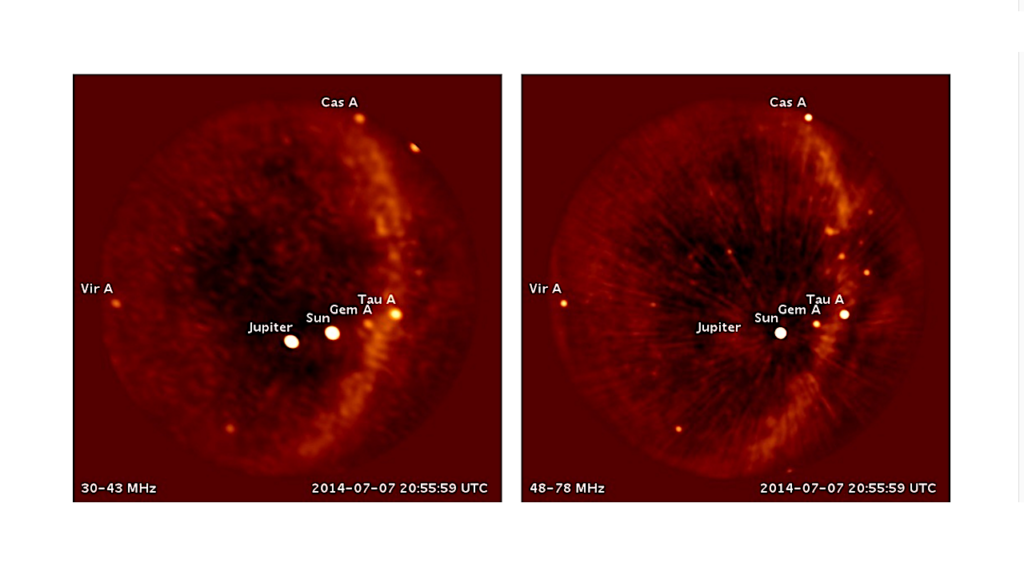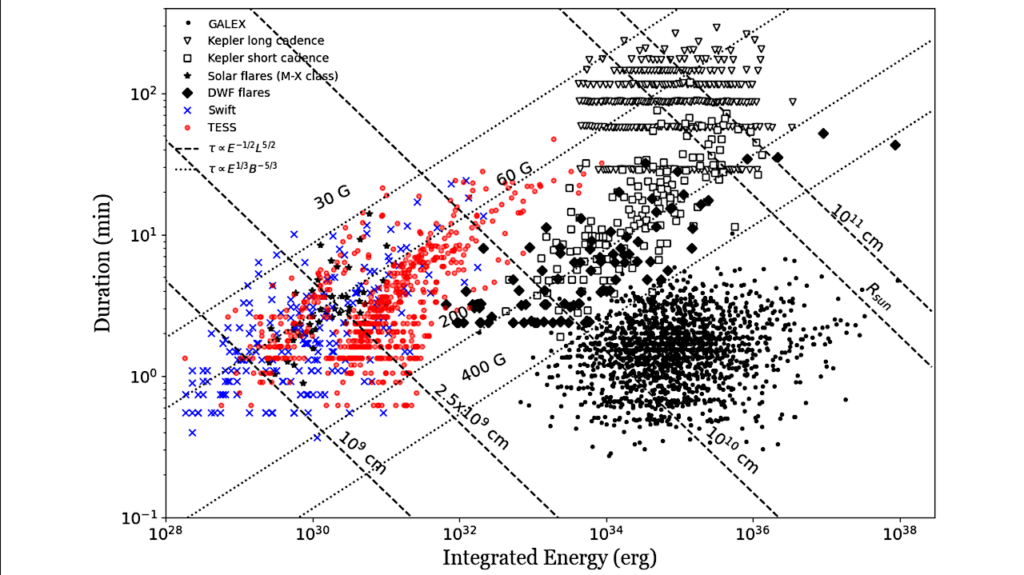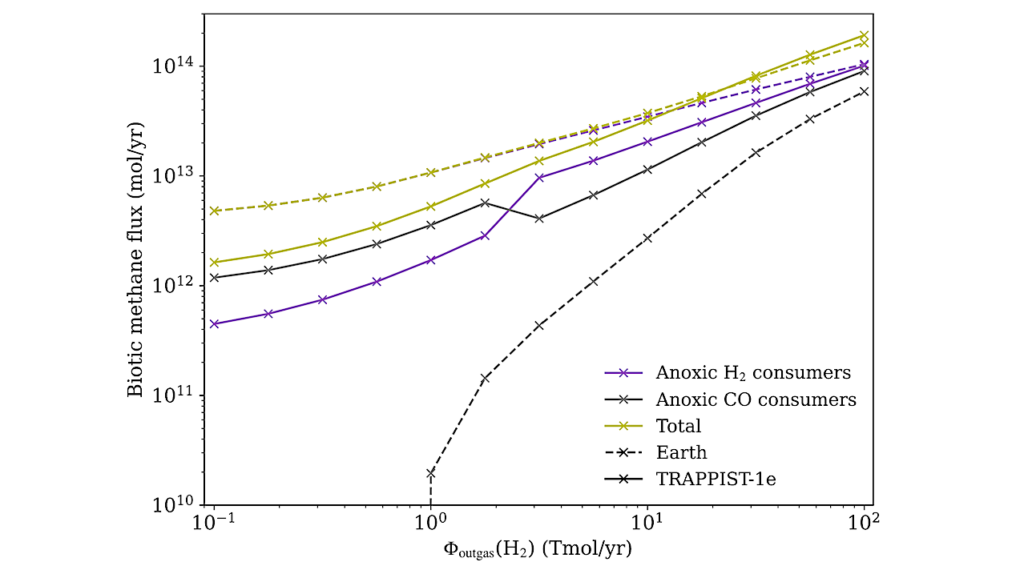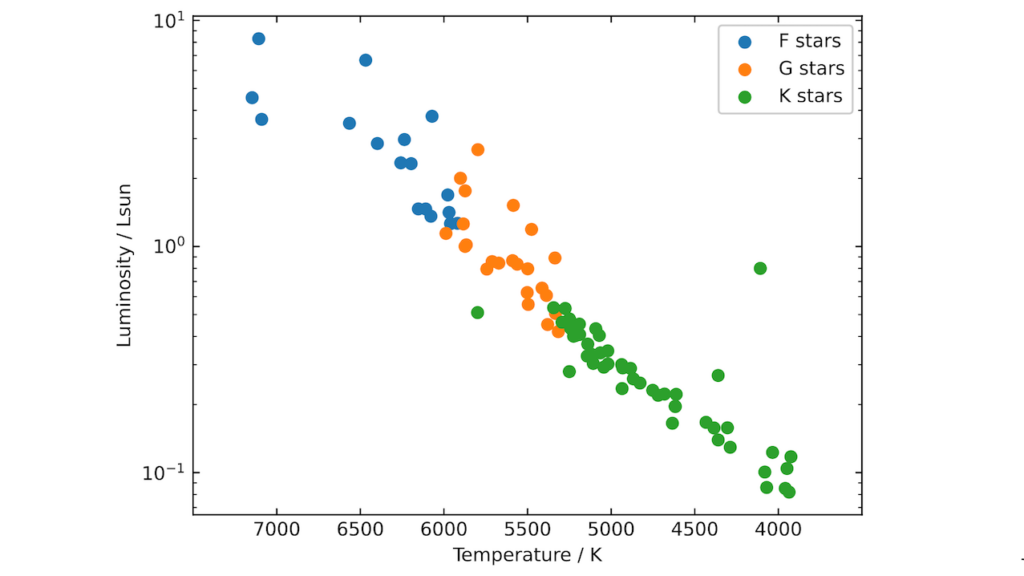Blue, White, and Red Ocean Planets – Simulations of Orbital Variations in Flux and Polarization Colors

An exoplanet’s habitability will depend strongly on the presence of liquid water. Flux and/or polarization measurements of starlight that is reflected by exoplanets could help to identify exo-oceans.
We investigate which broadband spectral features in flux and polarization phase functions of reflected starlight uniquely identify exo-oceans. We compute total fluxes F and polarized fluxes Q of starlight reflected by cloud-free and (partly) cloudy exoplanets, for wavelengths from 350 to 865 nm. The ocean surface has waves composed of Fresnel reflecting wave facets and whitecaps, and scattering within the water body is included. Total flux F, polarized flux Q, and degree of polarization P of ocean planets change color from blue, through white, to red at phase angles alpha ranging from 134 -108 deg for F, and from 123-157 deg for Q, with cloud coverage fraction fc increasing from 0.0 to 1.0 for F, and to 0.98 for Q. The color change in P only occurs for fc ranging from 0.03-0.98, with the color crossing angle alpha ranging from 88-161 deg. The total flux F of a cloudy, zero surface albedo planet can also change color, and for fc=0.0, an ocean planet’s F will not change color for surface pressures ps > 8 bars. Polarized flux Q of a zero surface albedo planet does not change color for any fc. The color change of P of starlight reflected by an exoplanet, from blue, through white, to red with increasing alpha above 88 deg, appears to identify a (partly) cloudy exo-ocean.
The color change of polarized flux Q with increasing alpha above 123 deg appears to uniquely identify an exo-ocean, independent of surface pressure or cloud fraction. At the color changing phase angle, the angular distance between a star and its planet is much larger than at the phase angle where the glint appears in reflected light. The color change in polarization thus offers better prospects for detecting exo-oceans.
Victor J.H. Trees, Daphne M. Stam
(Submitted on 18 Apr 2019)
Comments: Accepted for publication in Astron. Astrophys
Subjects: Earth and Planetary Astrophysics (astro-ph.EP)
Cite as: arXiv:1904.08922 [astro-ph.EP] (or arXiv:1904.08922v1 [astro-ph.EP] for this version)
Submission history
From: Daphne Stam
[v1] Thu, 18 Apr 2019 17:57:10 UTC (13,804 KB)
https://arxiv.org/abs/1904.08922
Astrobiology








